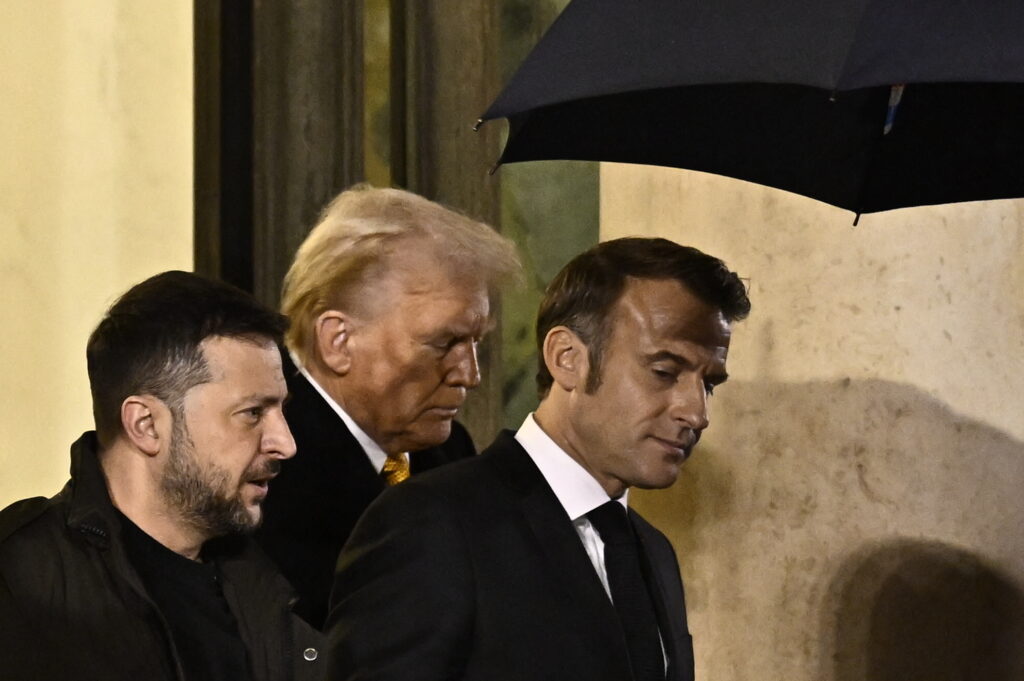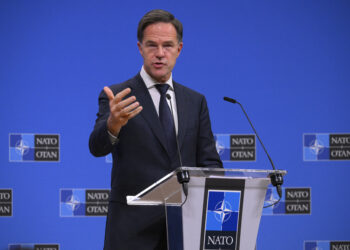Brussels – He has not yet officially taken office, but U.S. President-elect Donald Trump has already started asking his (future) Russian counterpart Vladimir Putin to sit down at the negotiating table to stipulate a ceasefire in Ukraine as soon as possible. Also, because Putin “is weakened” due to the war and “the poor state of the economy,” continuing the wars could have “much bigger and worse effects,” Trump said in an interview with the New York Post.
Even for the NATO allies, the message is still the same: If you don’t do your part in terms of military spending, don’t count on Washington’s protection.
Ukrainian President Volodymyr “Zelensky and Ukraine would like to make a deal and stop the madness,” the New York-based tycoon wrote on his Truth platform, after having suggested in an interview aired last weekend that it is “likely” that his administration—whose formal inauguration is scheduled for Jan. 20—would reduce military aid to Kyiv. “There should be an immediate ceasefire, and negotiations should begin,” he wrote, adding, “I know Vladimir (Putin, ed) well. It is his time to act. China can help. The world is waiting.”
Last weekend, Trump met Zelensky in Paris (where he was to attend the reopening of Notre-Dame Cathedral after the fire that devastated it in 2019) in the presence of his host, French President Emmanuel Macron. During a trilateral meeting at the Elysée Palace, the transalpine head of state sought to act as a facilitator between the two, between whom a direct and stable channel has not yet been established despite the fact that contacts have been in place since at least last summer.
The Ukrainian president described the talks with the future White House tenant as “constructive” but wanted to reiterate for the umpteenth time that peace with Russia will have to be “just and solid,” a peace “that the Russians cannot destroy in a few years as they have done before,” he said in the aftermath of the meeting. The point is still the same: “We must talk first about effective peace guarantees,” reiterated Zelensky, for whom the best security guarantee for the former Soviet republic is still the accession to NATO.

In his interview, Trump even went so far as to ventilate the possibility of withdrawing Washington from NATO, signalling that U.S. participation during his next term cannot be taken for granted if the other member states do not live up to their commitments in terms of defence spending, to which, according to the targets decided in 2014, should go at least 2 per cent of national GDP. “If they pay their bills and if I think they treat us fairly,” the president-elect said, “I would absolutely stay in NATO.”
These statements have alarmed the Ukrainian leadership, other members of the North Atlantic Alliance, and security experts in the U.S. themselves. The future president did not disclose whether he has already personally contacted Putin (“because I don’t want to do anything that would hinder negotiations,” he explained). Still, it is clear that, at least in the circles of what will be the next administration, preparations to arrive at a cessation of hostilities as soon as possible are already underway, at least judging by the levity with which the next president of the States is addressing the topic.
However, at least officially, no concrete plans have been released on how you might get to such an outcome. Considering both the impatience that Trump seems to have and the recent remarks of Zelensky, who admitted for the first time since the war began in February 2022 that it will be impossible for Ukraine to regain control of occupied regions militarily, many observers imagine that any negotiating plan to end the conflict would involve a cession (at least temporarily) of part of the oblasts that ended up under Russian occupation—without considering Crimea, unilaterally annexed by Moscow in 2014.
English version by the Translation Service of Withub

![Andrius Kubilius, commissario per la Difesa e lo spazio, in sottocommissione Sicureza e difesa [Bruxelles, 5 dicembre 2024]](https://www.eunews.it/wp-content/uploads/2024/12/kubilius-he1-350x250.png)




